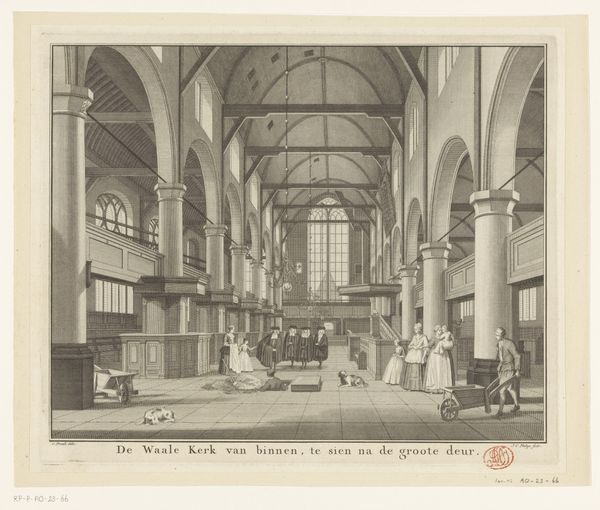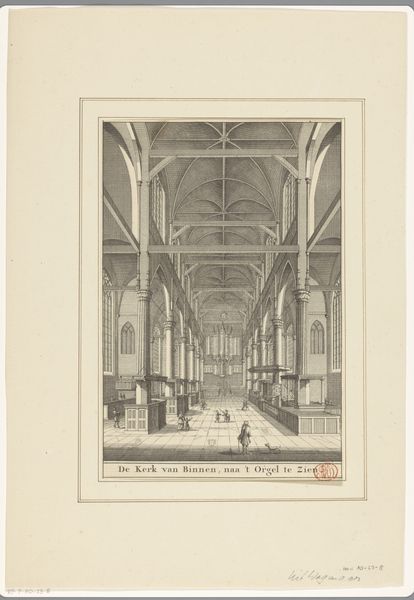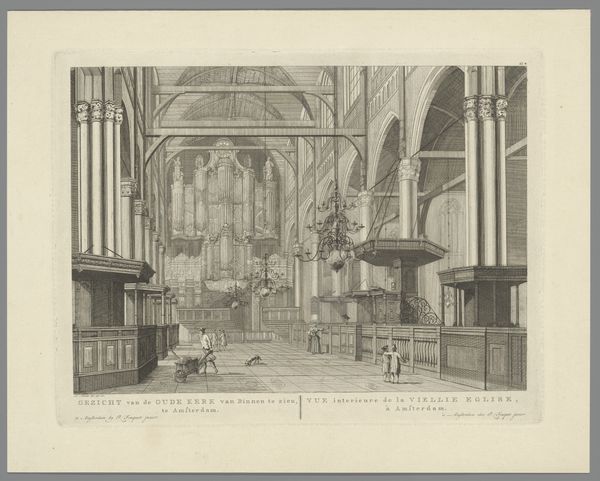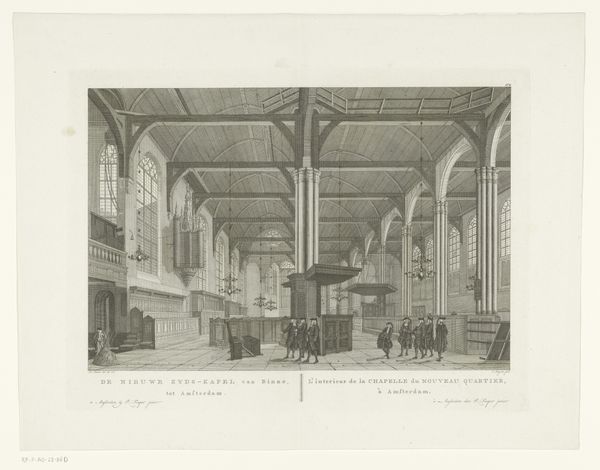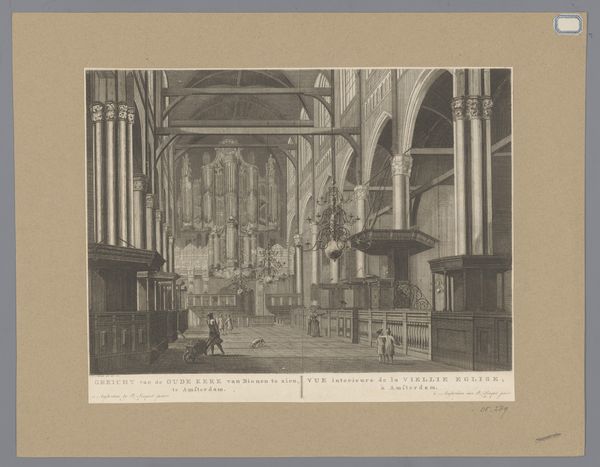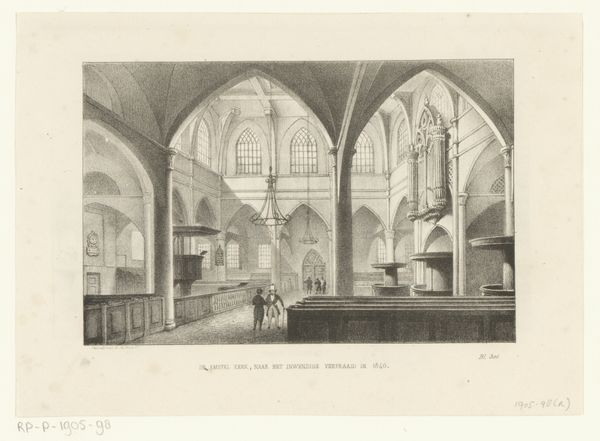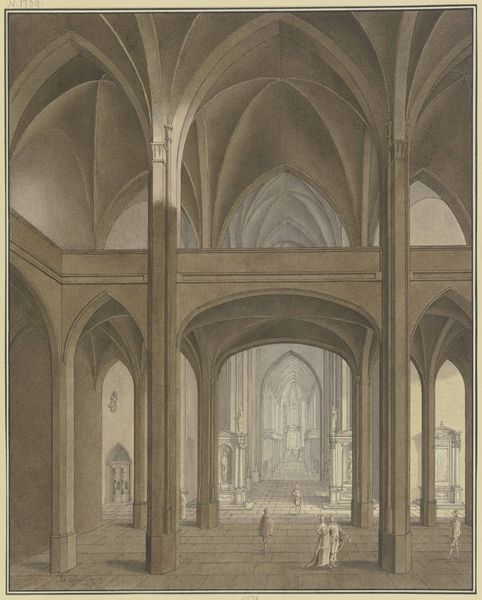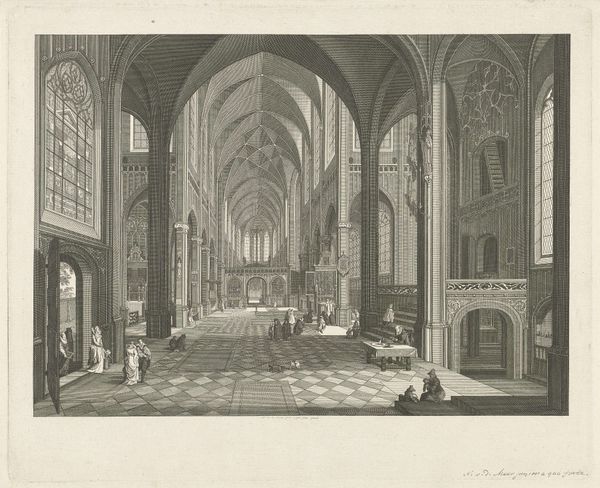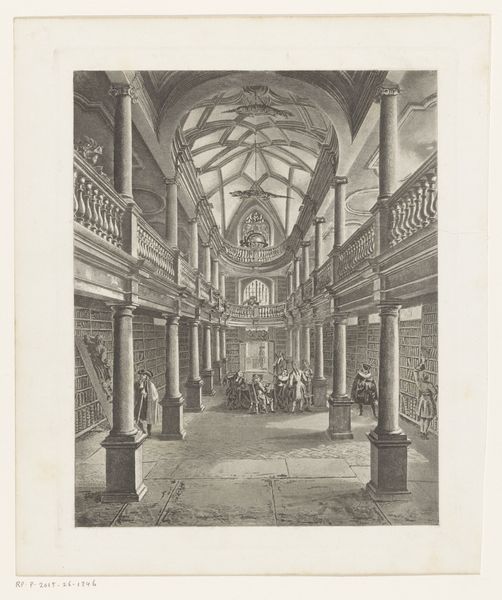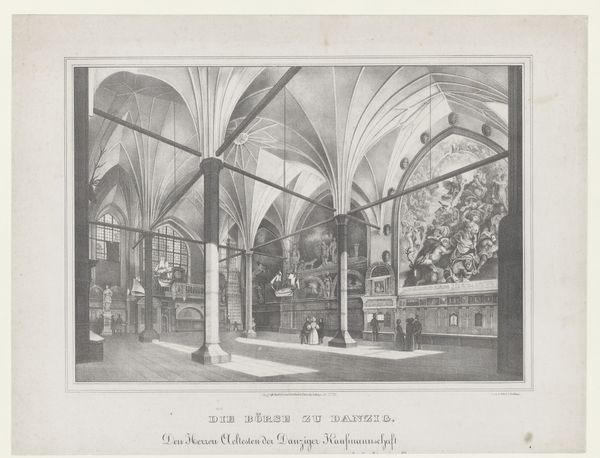
Interieur van de Waalse Kerk te Amsterdam, gezien richting het orgel 1736 - 1759
0:00
0:00
drawing, engraving, architecture
#
drawing
#
baroque
#
cityscape
#
genre-painting
#
engraving
#
architecture
Dimensions: height 242 mm, width 290 mm
Copyright: Rijks Museum: Open Domain
Editor: Here we have Jan Caspar Philips's "Interior of the Walloon Church in Amsterdam, Looking Towards the Organ," an engraving made sometime between 1736 and 1759. What immediately strikes me is how this formal, public space is animated by the everyday, with those dogs lounging in the foreground. How do you interpret the choices the artist made here? Curator: The tension you’ve identified is key. Consider the Walloon Church itself: a space built by and for French-speaking Calvinists in Amsterdam. This engraving, functioning as a kind of "genre painting" inside a place of worship, normalizes their presence, makes their experience visible. What power dynamics are subtly at play when we observe these individuals and their animals occupying this space? Editor: It's interesting to think about the artist making the congregation visible at a time and place they might have been marginalized. Are the dogs just for added realism, or could they represent something more? Curator: That's a great question! Animal presence complicates things. Perhaps, the dogs’ nonchalance suggests an unquestioned sense of belonging, even privilege. Look closer at the people, their clothing, their posture – what do these visual elements contribute to a discussion on societal status during that time period? What relationship did class play in access and power during that period? Editor: I hadn't considered that angle. The detail in the rendering of their clothing and bearing definitely speaks to social standing, and how the Church visually codifies that. This artwork feels less like a straightforward depiction and more like a statement about the social hierarchy reflected and reinforced within religious spaces. Curator: Precisely! The public role of art is constantly negotiating visibility and power. What have you found yourself reflecting on through our chat today? Editor: It definitely brought attention to the fact that even simple art is affected by history, not just depicting life as it is, but possibly the artist wanting to make some point about socio-political status too. Curator: Avenues for further research and reflection I think, but I share in that assessment, and the work brings important socio-political statements to the modern audience today.
Comments
No comments
Be the first to comment and join the conversation on the ultimate creative platform.
